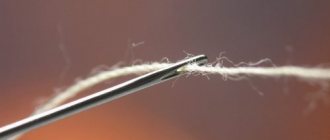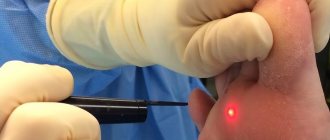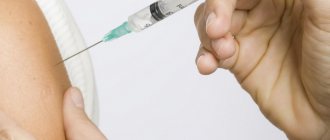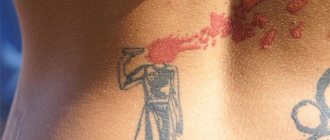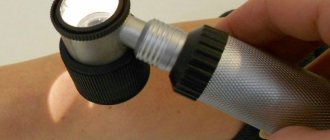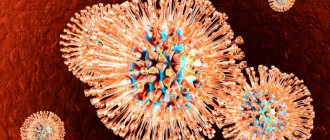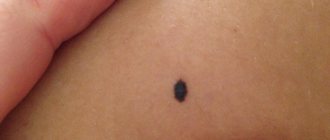We often encounter such a problem as a wart under the nail. These neoplasms are benign and are very often caused by the human papillomavirus. In order to become infected with the human papillomavirus, it is enough to have damage on the skin, such as microtrauma. Warts are located near the nail plate and can be found on the hands and feet. These tumors, although harmless, cause considerable discomfort.
Most often, school-age children and teenagers from 8 to 17 years old are susceptible to this virus. One of the main factors in the formation of warts is low immunity. We will tell you about this and much more further.
What is a subungual wart?
A subungual wart is a benign neoplasm that appears on the leg, arm, and specifically under the nail plate. The cause of its occurrence is the second strain of human papillomavirus.
Subungual warts are benign formations under the nail plate. Cause: human papillomavirus, activated by immunodeficiencies of various natures.
Diagnostics: examination, biopsy, PCR.
Treatment: removal using electrocoagulation, laser therapy, cryotherapy, scalpel; sometimes they get by with the prescription of keratolytics, local necrotizing drugs, and cryodestruction.
The surface of these growths is rough, the shape is spherical or flat, and the color is in most cases gray. Only sometimes there are bodily periungual and subungual warts.
Despite the fact that these new growths are localized on the surface, under certain conditions their roots grow far into the depths. Getting rid of such growths is much more difficult.
Warts that appear on the arms and legs are considered harmless due to the fact that they do not cause discomfort or pain. However, when they are damaged, various infections easily enter the body.
In childhood, the appearance of periungual warts may be associated with frequent trauma to this area.
Young children often injure their fingers in the sandbox or on the playground.If a single wart appears, dynamic observation is recommended. As a rule, they disappear on their own as the child grows older.
Cosmetologist, dermatologist, trichologist
Kalinina Olga Alexandrovna
4 years of experience
Subungual and periungual warts are not only an aesthetic defect. The condition of the nails gradually deteriorates, and over time the nail plates become deformed, become brittle and crumble. That is why treatment must be started as early as possible.
Causes
The human papillomavirus is the main cause of warts under and around the nail. It is transmitted through direct contact with an infected person and through the use of his personal belongings.
But even after the virus enters the body, growths may not appear at all. HPV remains in a latent state for a long time.
The transition of the virus to the active phase can be triggered by the following factors:
- suppression of the immune system;
- exposure to constant stress;
- hormonal imbalance;
- exacerbation of concomitant chronic diseases;
- failure to comply with basic rules of personal hygiene.
Removing warts with nitrogen
Cryodestruction is a method of removing warts by exposing them to liquid nitrogen.
In addition, even minor damage in the area around the nails can precede the formation of growths. At high risk are people who are forced to frequently come into contact with water and household chemicals without protective gloves.
The danger can be posed by careless cuticle removal and excessive sweating, as well as the habit of biting nails. In patients in these categories, the virus spreads much faster, and the clinical picture is more pronounced.
Cryodestruction: features of the technique
Cryotherapy today is one of the most popular and effective methods for removing periungual warts. The essence of the procedure is simple - pathologically altered tissues are treated with liquid nitrogen. When exposed to ultra-low temperatures, wart cells are destroyed.
After the procedure, a blister (burn) forms on the skin, which goes away on its own after a few days. This is an accessible technique, and its cost is relatively low. However, sometimes small scars remain on the treated areas of the skin.
Symptoms and types
Depending on the location, nail growths are divided into two types:
Periungual
Appear on the skin near the nail plate. At the initial stage of its development, the formation of a small growth of flesh-colored or gray color with a rough surface is noted.
Most often, these neoplasms have a flat surface, but in some cases they can be elevated. Warts are similar to calluses, but their surface is looser. Due to systematic damage, the growths acquire a brown or red color;
Subungual
They are localized directly under the nail plate itself and do not manifest themselves in any way for a long period. Visually, the seals are pinkish or flesh-colored growths of a rounded shape.
As they grow, they lift the nail plate and thereby deform it. The appearance of transverse and longitudinal stripes on the nail is also noted, it becomes depleted and becomes brittle.
A distinctive feature of subungual warts from other types is discomfort and pain, which intensify as the tumor increases in size. If the growth is localized on the leg, the patient cannot wear usual shoes, since the wart is injured and inflamed, and as a result, bacteria enter the body.
Why can our articles be trusted?
We make health information clear, accessible and relevant.
- All articles are checked by practicing doctors.
- We take scientific literature and the latest research as a basis.
- We publish detailed articles that answer all questions.
When the growths become inflamed, their intensive growth and fusion are noted. Often the development of such neoplasms is accompanied by a fungal infection.
Diagnostics
An experienced doctor is able to distinguish a subungual or periungual wart from other neoplasms during the first visual examination. Despite this, a number of additional studies are most often carried out:
- Dermatoscopy - the growth is examined at multiple magnification.
- Biopsy - a sample is taken from the affected area and sent for histological examination. Thanks to this, it is possible to obtain information about whether the growth is malignant.
- Prc diagnostics - it is used to determine the HPV strain and the number of virus particles in the body.
Only after making an accurate diagnosis does a specialist prescribe a course of treatment. Therapeutic measures largely depend on the type of papillomavirus and the degree of risk of the growth degenerating into a malignant tumor.
How to treat periungual warts? Features of drug therapy
It is immediately worth noting that drug therapy is rarely required. In most cases, it is enough to remove the wart, and sometimes the tumors completely disappear on their own.
Drug treatment of periungual warts is prescribed only if there is a marked decrease in the activity of the immune system. It is advisable to take Acyclovir and other antiviral drugs.
Naturally, treatment must be comprehensive. Antiviral drugs are taken not only internally - the affected areas of the skin are treated with special ointments and gels, which also negatively affect the activity of viruses. Products such as Panavir and Viferon are considered effective.
Treatment
A wart, regardless of location, is a benign formation that extremely rarely mutates into melanoma. If it does not cause discomfort and does not spoil the aesthetic appearance, then no therapeutic measures are taken. Treatment is necessary in the following cases:
Self-medication is dangerous with complications!
Attention
Despite the fact that our articles are based on trusted sources and have been tested by practicing doctors, the same symptoms can be signs of different diseases, and the disease may not proceed according to the textbook.
Pros of seeing a doctor:
- Only a specialist will prescribe suitable medications.
- Recovery will be easier and faster.
- The doctor will monitor the course of the disease and help avoid complications.
find a doctor
Do not try to treat yourself - consult a specialist.
- the boundaries of the growth become blurred;
- an increase in the number of neoplasms;
- modification of the wart (color or shape);
- bleeding;
- itching or pain.
There are several methods for removing warts.
Electrocoagulation
Pathological tissues are cauterized under the influence of alternating current. For this purpose, an electrode is used that is heated to a high temperature. Due to protein coagulation, the growth dies. After a short time, the skin at the site of the tumor is restored.
This method also has a number of contraindications, including active herpes, exacerbation of chronic diseases, cancer and all inflammatory processes.
Laser therapy
In this case, the pathological tissues are evaporated, and due to the instant sealing of the vessels, the risk of bleeding is completely eliminated.
The area of epithelium treated with laser quickly regenerates, and scars do not form. It is highly not recommended to remove growths using this method for patients suffering from diabetes, cancer and epilepsy.
The procedure is contraindicated for pregnant women and women during lactation, as well as in the presence of infectious and inflammatory diseases in the active stage.
Cryotherapy
Warts are frozen under the influence of liquid nitrogen. A bubble appears in the affected area, in the place of which the skin quickly recovers.
Large growths are removed in several sessions. The procedure is painful. That is why it is not used in the treatment of children. In addition, scar formation cannot be ruled out.
Excision with a scalpel
The operation is performed under local anesthesia. The method is used extremely rarely, only in cases where other therapeutic measures have failed and there is a suspicion that the growth has degenerated into a malignant tumor.
After this procedure, material remains for subsequent histological examination. There is a high chance of developing noticeable scars.
Drugs
In the early stages, warts can also be removed with the help of medications. The following groups of drugs are used:
- Keratolytics - the active ingredient in this case is salicylic or lactic acid, which helps dissolve keratinized areas of the epithelium.
- Preparations with local necrotizing effect.
- Antiviral local agents.
Among the effective means that can remove warts near and under nails are ointments, patches and solutions based on salicylic acid.
Therapy must necessarily include not only the use of external agents, but also the use of antiviral and immunostimulating drugs.
Any medications must be prescribed by the attending physician. Self-medication in this case is unacceptable. Warts can not only reappear, but also degenerate into a malignant formation. There is also a risk of secondary infection entering the body.
Removing warts using chemicals
Periungual warts can be removed by exposing the tissue to chemically aggressive substances. There are a large number of drugs that can be purchased at the pharmacy:
- "Feresol" is a solution that contains metacresol. The drug is carefully applied to the wart. If the tumor is small, then one application is enough. Otherwise, the procedure will have to be repeated in a week.
- “Supercleaner” is also considered effective. The solution contains potassium and sodium alkalis, which cause tissue necrosis. The wart cells die and then begin to peel off. It is very important not to allow the solution to come into contact with healthy tissue areas.
- Some experts recommend Solcoderm solution. This drug contains a complex of acids that cause tissue necrosis.
Of course, you should not use such medications on your own; first, you should definitely consult with a specialist.

